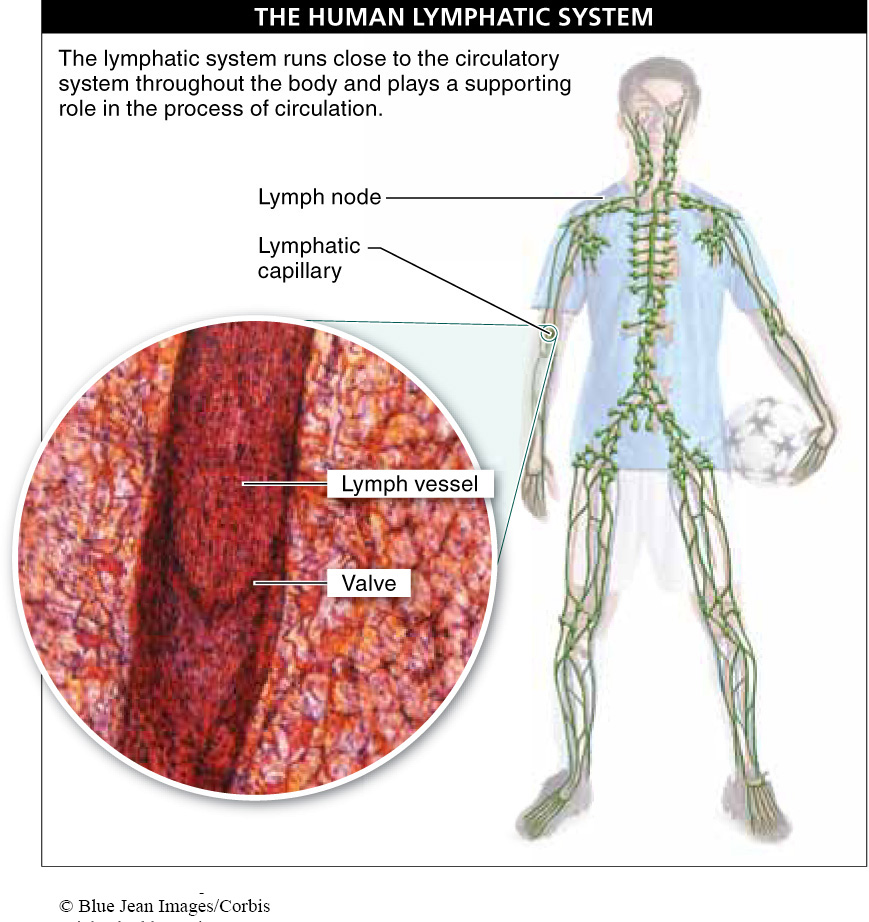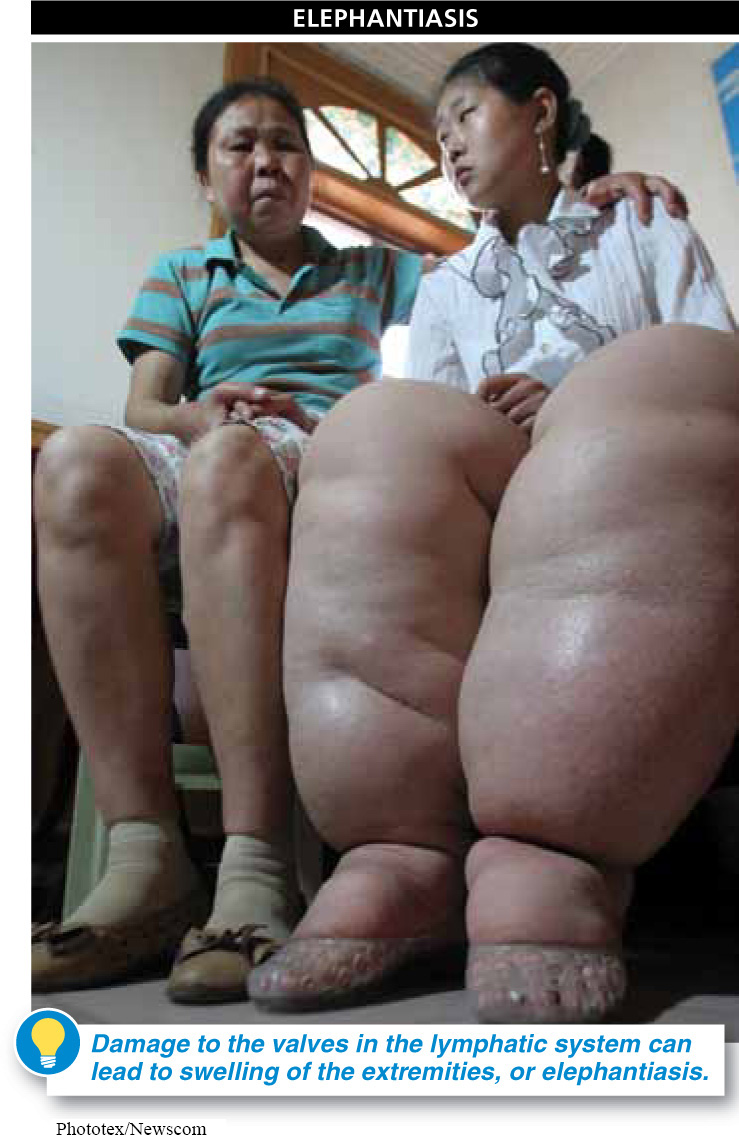
Our bodies have what appears to be another circulatory system (FIGURE 21-22). In addition to the cardiovascular system, and running close to it throughout the body, is the lymphatic system. Why the seeming redundancy? The lymphatic system is a network of vessels—
1. Recycling. As diffusion occurs between the capillaries and the interstitial fluid surrounding cells, much fluid is lost from the blood. Here’s where the lymphatic system comes in. Intertwined around blood vessels, the lymphatic capillaries take in, by diffusion, fluid, proteins, and other substances that have leaked into the interstitial fluid from the blood. Once recovered, this fluid, now called lymph, travels through progressively larger lymphatic vessels that eventually join up with veins in the shoulders. At this point, the recovered proteins and fluid (which amounts to several liters each day) are returned to the blood as it makes its way back to the heart.
850
Why is it not necessarily a good idea to have your tonsils taken out, even if they are painfully swollen?
2. Fighting illness. As it moves through the lymphatic system, lymph passes through patches of connective tissue called lymph nodes. These compartmentalized sacs are filled with pathogen-

3. Retrieving nutrients. The lymphatic system has numerous little projections that extend into the small intestine and absorb lipids from the food you have eaten and shuttle them from the digestive tract to the bloodstream.
In humans, the lymphatic system accomplishes these tasks without a pump. There is no “lymph heart.” Rather, lymph is pushed through the system when muscles adjacent to lymph vessels contract and squeeze the fluid onward. Lymph vessels (like veins) have valves that keep the lymph flowing in one direction. When you sit for an extended period of time, lymph can accumulate in vessels. You can help move it along by contracting the muscles in your extremities and progressively contracting muscles closer and closer to your shoulders.

Infection by some parasitic worms can cause the scarring of lymph vessels. When lymph vessels are scarred, fluid recovered by the lymphatic system cannot be returned to the circulatory system, and the extremities swell, often tremendously (FIGURE 21-24). This disease is called elephantiasis. Because the parasitic worms causing elephantiasis are transmitted by mosquitoes, the condition is most common in tropical regions. It can be treated with antibiotics that kill the symbiotic bacteria necessary for the parasitic worm to live.
851
TAKE-HOME MESSAGE 21.11
The lymphatic system runs close to the circulatory system throughout the body and plays a supporting role in the process of circulation, by performing three main functions: recycling fluid that leaks out of the capillaries of the circulatory system, marshaling white blood cells to help fight dangerous cells and pathogens, and absorbing nutrients from the digestive system.
The lymphatic system is a second circulatory system that moves fluids and other substances within your body. The heart pumps fluid through the cardiovascular system, but the lymphatic system has no similar pump. How are fluids moved through this system?
Lymph is pushed through this system when muscles adjacent to lymph vessels contract and squeeze the fluid onward. Coupled with one-way valves, this keeps the fluid moving in one direction.
852